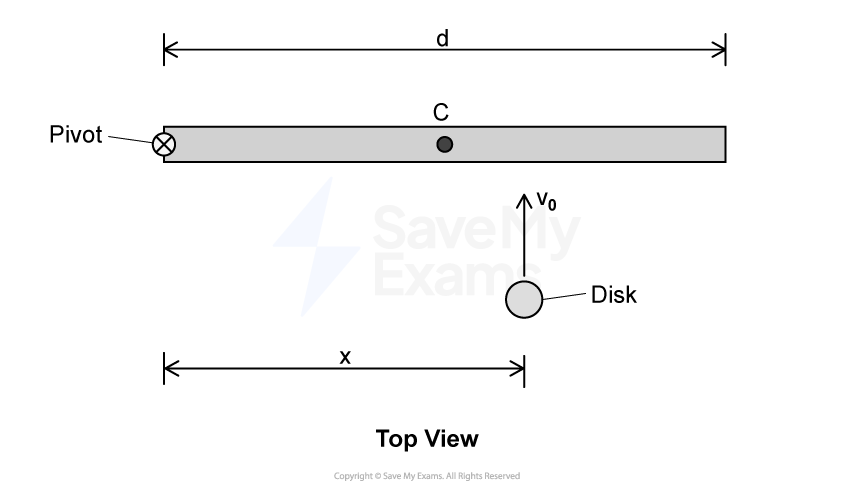
Figure 1
The left end of a rod of length and rotational inertia
is attached to a frictionless horizontal surface by a frictionless pivot, as shown in Figure 1. Point
marks the center (midpoint) of the rod. The rod is initially at rest but is free to rotate around the pivot. A disk of mass
slides towards the rod with velocity
perpendicular to the rod. Following the collision, the disk sticks to the rod a distance
from the pivot.
If the disk is much less massive than the rod, indicate whether the rod would gain the largest angular speed if the disk were to hit the rod to the left of point , at point
, or to the right of point
.
⎽⎽⎽⎽⎽⎽⎽⎽⎽⎽ To the left of ⎽⎽⎽⎽⎽⎽⎽⎽⎽⎽ At
⎽⎽⎽⎽⎽⎽⎽⎽⎽⎽ To the right of
Justify your answer using qualitative reasoning beyond referencing equations.
Starting with conservation of angular momentum, derive an equation for , the angular speed of the rod after the collision, in terms of
,
,
,
, and
. Begin your derivation by writing a fundamental physics principle or an equation from the reference book.
The experiment is repeated with a second disk. Following the collision, the second disk bounces backward instead of sticking to the rod. The angular speed of the rod after the second collision is .
Indicate whether is greater than, less than, or equal to
.
⎽⎽⎽⎽⎽⎽⎽⎽⎽⎽ ⎽⎽⎽⎽⎽⎽⎽⎽⎽⎽
⎽⎽⎽⎽⎽⎽⎽⎽⎽⎽
Justify your reasoning using the equation you derived in part b).
Did this page help you?






